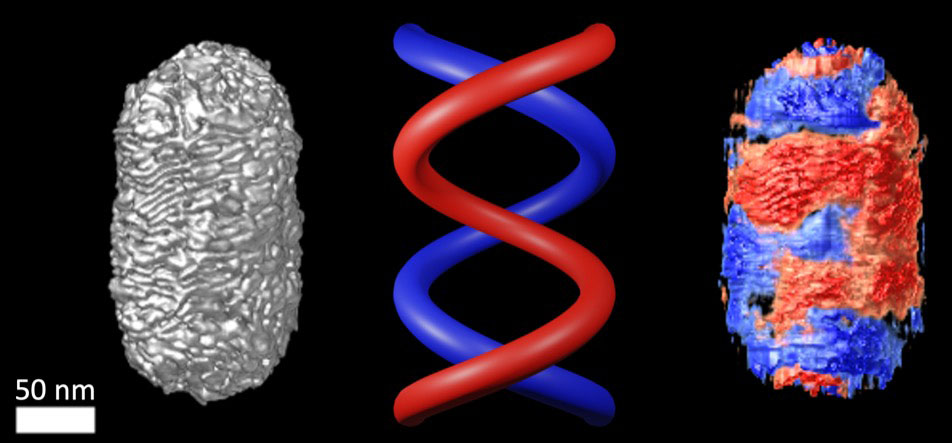| Mar 10, 2022 | |
A new method to quantify structural helicity in chiral nanoparticles (w/video) |
|
| (Nanowerk Spotlight) Researchers at EMAT, Electron Microscopy for Material Science research group of the University of Antwerp and the NANOlab Center of Excellence, have developed a novel technique to quantify the helical morphology of Au chiral nanorods. | |
| Such nanoparticles exhibit unique properties in a sense that they can change the circular polarization of light. | |
 |
|
| Chiral Au nanorod and its helicity map that shows which regions are right-handed helical (red) and left-handed helical (blue), as indicated by the helices. (Image courtesy of the researchers) | |
| In many cases, these properties are believed to be caused by the helical (or “screw-like”) morphology of the nanoparticles, but until now it was very difficult to objectively analyze their shape. | |
| The morphology of nanoparticles can be retrieved using electron tomography. This is a technique where one acquires a series of images while tilting the sample to different angles. | |
| Mathematical algorithms can then be used to calculate the 3D morphology of the particle based on this tilt series. | |
| Next, the proposed method effectively decomposes a given shape into a combination of helices, which enables the quantitative analysis of helicity. | |
| As illustrated in the figure, it is e.g. possible to map the helicity across a nanoparticle, but also specific features, such as the helical pitch can be extracted. | |
| This methodology is the first building block towards a fundamental understanding of the chiroptical activity of nanoparticles. | |
| With this method, the relation between the structural and optical chirality of nanoparticles can be better understood. Such insights will be of great value towards the synthesis of new chiral nanomaterials with enhanced chiroptical properties, which are useful in different fields for e.g. enantioselective biosensing or enantioselective catalysis. | |
| 3D color-coded volume renderings of the helicity maps for gold nanorods. Red indicates right-handed helical features; blue indicates left-handedness. | |
| This novel method and exemplary results of its application for chiral Au nanorods, produced by the group of Professor Luis Liz-Marzán from the CICBiomaGUNE institute in San Sebastián in Spain, have been published in the journal ACS Materials Letters ("Quantification of the helical morphology of chiral gold nanorods"). | |
| Provided by the University of Antwerp | |
|
Become a Spotlight guest author! Join our large and growing group of guest contributors. Have you just published a scientific paper or have other exciting developments to share with the nanotechnology community? Here is how to publish on nanowerk.com. |
|
